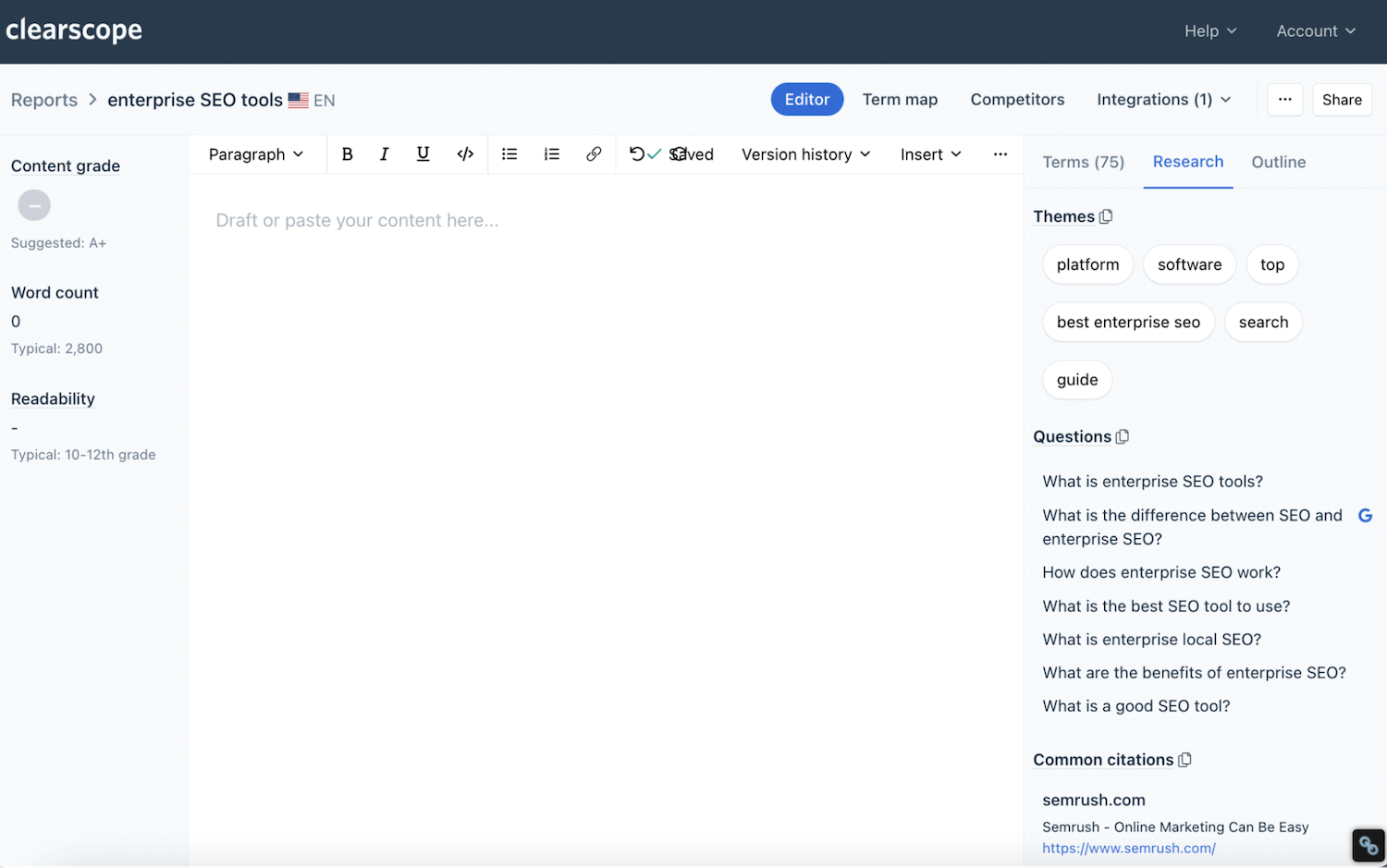Writing content for SEO is not some super technical art. In fact, if you cater to search intent, cover relevant topics, answer common reader questions, and deliver on quality — chances are, your content already has a chance of ranking well (even before implementing any SEO best practices).
That’s because content quality — beyond just writing well, but honing in on what’s important to the reader — is one of Google’s leading ranking factors. Even if you deploy a dozen other strategies to promote content, it won’t stay in top search positions or perform well if it isn’t carefully written and focused on readers’ interests.
The best and easiest way to produce optimized content is to weave SEO best practices into your natural writing processes. Understanding how to write for humans and Google means you can consider both audiences through every stage of content creation: from SERP research to editing and finalizing content.
Plus, SEO content writing solutions, like Clearscope, are designed to guide this very process. Our content optimization platform has:
- Keyword research tools to perform SERP analysis and understand search intent.
- Guided SEO reports that show you topics to cover, FAQs to answer, and important headings and terms to include in content.
- Integrations with Google Docs and WordPress, so you can access SEO reports in the tools you already use to write and refresh content.
Our reports are designed to support natural, high-quality writing — we don’t overload you with hundreds of keywords to squeeze in content, and our platform uses natural language processing to understand variations of terms and phrases. Reports display real-time progress so you know which boxes you’ve checked and the readability status as you work.
In this post, we’ll review the best practices for writing SEO content within the context of your natural workflows — with Clearscope’s guided reports — and by the end, you’ll know how to write SEO-friendly content like a pro.
In summary, you want to:
- Research the target keyword and understand how to cater content to search intent.
- Brainstorm clear but catchy titles, meta descriptions, and headings that include relevant keywords.
- Draft content while weaving in Clearscope suggestions, like recommended terms and FAQs.
- Edit content for readability and scannability.
- Add internal links, external links, supporting media, and alt-text.
Bonus: Build backlinks and use other promotional strategies to push content higher in search engine rankings.
You can also schedule a demo of Clearscope to learn more about our platform features and content reports. (Or try our platform here.)
1. Research the target keyword and SERP competitors to learn more about your audiences’ search intent
This first step is arguably the most important because everything after — the outline you put together, the content you cover, the images, links, and CTAs you include, etc. — is based on the research you gather here. (So it’s important to be thorough.)
Vetting the target keyword helps you understand who you’re competing with on the search engine results page (SERP) and learn about the target audience’s search intent.
This is the time to dig into search results and center yourself in the reader’s shoes:
- What is the goal of their research? (Are they learning about a topic, shopping for a product or service, comparing two products/brands…)
- What questions do they have? (Look at “People Also Ask” and the related searches.)
- What sites are currently ranking? (Media outlets, medical sites, product pages, review sites, social media channels…)
- What do they have to say on the topic? (What type of content do they produce? What do they do well? Where do they lack?)
- Where do you fit in?
Analyzing competitors is beneficial because it gives you an idea of what they do well, and where their content is lacking, which can help you brainstorm strategies to outperform them in search engine rankings.
Remember to keep the readers’ goals at top of mind when putting together your outline — it’s crucial to understand what they’re looking for and cover that information in a clear, engaging way.
Clearscope simplifies this step because we provide resources to research the SERP within our platform.
First, generate a report for the target keyword — let’s say the primary keyword is “enterprise SEO tools”. Click the ‘Competitors’ tab within the report to see who’s ranking in the top #1-30 positions. We display page titles, URLs, content scores, and word counts for each page, then you can open links to see the actual content competitors provide.

You can also explore the ‘Research’ tab within reports to see themes, FAQs, and common citations to incorporate in your content. We also suggest searching the target keyword in a new window to see featured snippets and People Also Ask. (This can help with on-page SEO strategies later in our guide.)

This research shows that the Googler is learning about different types of enterprise SEO tools to determine what they need for their operations, and shopping popular options. So we’d want to educate the Googler on the variety of SEO tools, explain the purpose and benefits of each tool, and provide product recommendations for each category.
You can read more about this step here: Your Guide to Analyzing User Intent for Better SEO Results
Leave a Reply